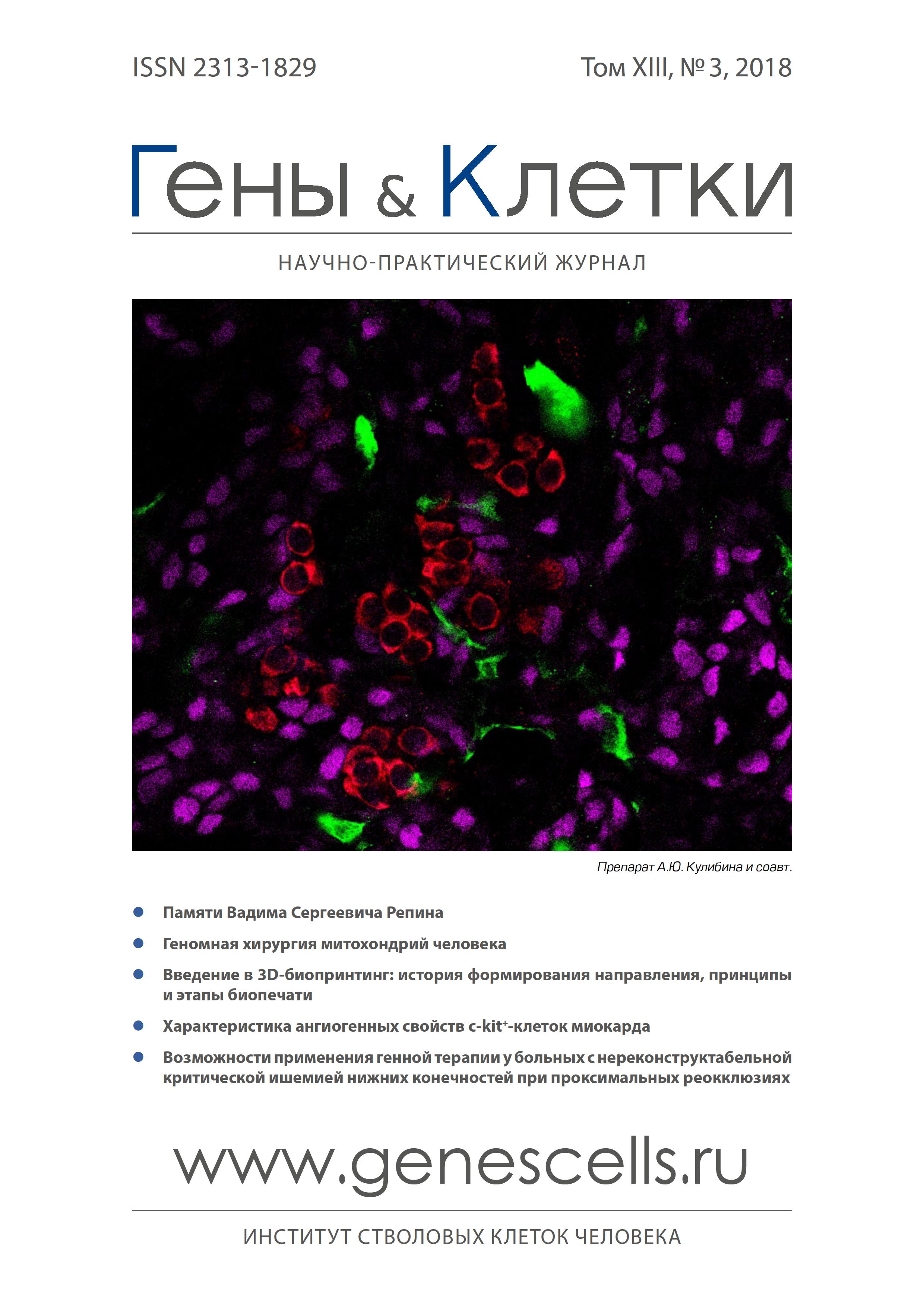A combination of small molecular inhibitors YAC increases expression levels of DMRT1 in the culture of sertoli cells from the transitional zone of mouse testis
- Authors: Kulibin A.Y.1, Malolina E.A1,2
-
Affiliations:
- N.K. Koltzov Institute of Developmental Biology of the RAS
- N.F. Gamaleya Research Institute of Epidemiology and Microbiology
- Issue: Vol 13, No 3 (2018)
- Pages: 75-81
- Section: Articles
- URL: https://genescells.ru/2313-1829/article/view/120749
- DOI: https://doi.org/10.23868/201811037
- ID: 120749
Cite item
Abstract
There is a cell population capable of active proliferation in culture in the compartment of adult mouse testis consisting of transitional zone of seminiferous tubules and rete testis. These cells were termed Sertoli cells of the transitional zone because they express many specific Sertoli cell genes in culture. A feature of these cells is a low level of Dmrt1 expression, a transcription factor important for Sertoli cell differentiation and male sex determination. In the current research, the culture conditions have been optimized to increase Dmrt1 expression in Sertoli cells of the transitional zone and then functional properties of these cells have been tested. It was shown that a combination of small molecular inhibitors YAC (Y-27632, A-83-01 and CHIR99021) substantially increases the number of Sertoli cells of the transitional zone expressing Dmrt1. It was demonstrated that Sertoli cells of the transitional zone maintained in medium with YAC remain the high level of Dmrt1 expression even after their transfer to 3D culture where they form seminiferous tubule-like structures with neonatal testicular cells. According to immunofluorescence and real-time PCR data Sertoli cells treated with YAC supported germ cell differentiation to the zygotene stage of meiotic prophase I in 3D culture. These results suggest that Sertoli cells of the transitional zone maintained in medium with YAC closely resemble Sertoli cells from seminiferous tubules and can function as Sertoli cells in 3D culture.
Full Text
About the authors
A. Yu Kulibin
N.K. Koltzov Institute of Developmental Biology of the RAS
Email: Kulibin.A.BKRJ@gmail.com
EA. A Malolina
N.K. Koltzov Institute of Developmental Biology of the RAS; N.F. Gamaleya Research Institute of Epidemiology and Microbiology
References
- Shinohara T., Orwig K.E., Avarbock M.R. et al. Restoration of spermatogenesis in infertile mice by Sertoli cell transplantation. Biol. Reprod. 2003; 68(3): 1064-71.
- Yokonishi T., Sato T., Katagiri K. et al. In vitro reconstruction of mouse seminiferous tubules supporting germ cell differentiation. Biol. Reprod. 2013; 89(1): 15.
- Zhang J., Hatakeyama J., Eto K. et al. Reconstruction of a seminiferous tubule-like structure in a 3 dimensional culture system of re-aggregated mouse neonatal testicular cells within a collagen matrix. Gen. Comp. Endocrinol. 2014; 205: 121-32.
- Figueiredo A.F., França _.R., Hess R.A. et al. Sertoli cells are capable of proliferation into adulthood in the transition region between the seminiferous tubules and the rete testis in Wistar rats. Cell Cycle 2016; 15(18): 2486-96.
- Aiyama Y., Tsunekawa N., Kishi K. et al. Niche for GFRa1-positive spermatogonia in the terminal segments of the seminiferous tubules in hamster testes. Stem Cells 2015; 33(9): 2811-24.
- Kulibin A. Yu., Malolina E.A. Only a small population of adult Sertoli cells actively proliferates in culture. Reproduction 2016; 152(4): 271-81.
- Buganim Y., Itskovich E., Hu Y.C. et al. Direct reprogramming of fibroblasts into embryonic Sertoli-like cells by defined factors. Cell Stem Cell 2012; 11: 373-86.
- Raymond C.S., Murphy M.W., O’Sullivan M.G. et al. Dmrt1, a gene related to worm and fly sexual regulators, is required for mammalian testis differentiation. Genes Dev. 2000; 14(20): 2587-95.
- Minkina A., Matson C.K., Lindeman R.E. et al. DMRT1 protects male gonadal cells from retinoid-dependent sexual transdifferentiation. Dev. Cell 2014; 29(5): 511-20.
- Кулибин А.Ю., Малолина Е.А. Характеристика минорной популяции активно пролиферирующих в культуре клеток Сертоли из транзиторной зоны яичка взрослых мышей. Молек. Мед. 2017; 15(6): 28-31.
- Livak K.J., Schmittgen T.D. Analysis of relative gene expression data using real-time quantitative PCR and the 2(-Delta Delta C(T)) method. Methods 2001; 4: 402-8.
- Katsuda T., Kawamata M., Hagiwara K. et al. Conversion of terminally committed hepatocytes to culturable bipotent progenitor cells with regenerative capacity. Cell Stem Cell 2017; 20(1): 41-55.
Supplementary files










